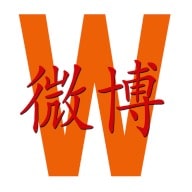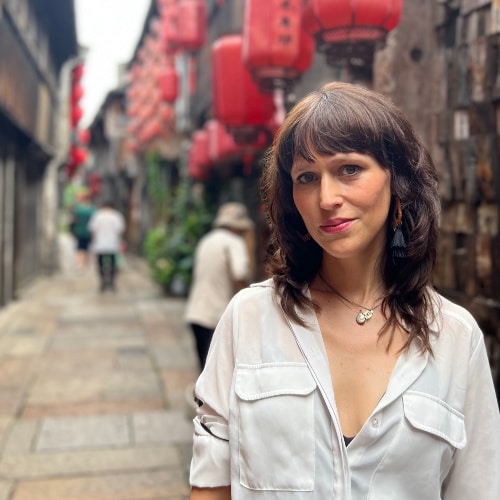China and Covid19
Victory of Perseverance? Visions of China’s ‘Dynamic Zero’ Covid Future
Many commenters have a less rose-colored view of the future of ‘zero Covid’ than some of China’s opinion makers.
Published
2 years agoon

While China is seeing the worst Covid outbreak in months and resentment is rising over strict lockdowns and ‘excessive’ Covid measures, Chinese political pundits and opinion leaders are painting a rosy picture of the future of China’s ‘zero Covid’ policy.
It is the Start of Winter (立冬) and China is seeing a spike in Covid-19 cases across the country.
There currently are approximately 40,000 confirmed Covid cases in the mainland, with the biggest outbreaks taking place in Guangdong, Inner Mongolia, and Xinjiang.
At the same time, frustrations over strict lockdowns and excessive anti-epidemic measures have been building recently, and there has been a lot of anger over a lack of emergency medical care for people in isolation in, among others, Ruzhou, Lanzhou, and Hohhot.
On Monday, November 7, political commentator Hu Xijin (@胡锡进), who used to be the editor-in-chief of Global Times, commented on China’s ‘dynamic zero’ Covid policy. Hu does so more often – in September 2022 he also published a lengthy post about China’s epidemic prevention.
China’s zero Covid policy is all about the speedy detection of new cases, followed by a quick response to curb the spread of the virus immediately and bring the epidemic situation under control. Because it is an ongoing process, it is called ‘dynamic zero’ (动态清零), with cases being extinguished soon after they are detected and with the eventual goal of having zero new infections in society (社会面清零).
The former journalist Hu, whose posts and statements often go trending and influence public opinion, made a few noteworthy comments in his recent post.
Hu suggested that the strict lockdowns in some parts of China are just not sustainable and that cities should stop striving to reach complete elimination of Covid cases. Instead, he advocated for a more relaxed and local approach, but did point out that Chinese cities could perhaps get back to focusing on reaching “zero” cases in the summer of 2023 (“到了明年夏天,也许一些城市可以重新追求零感染”).
By adhering to a model where Chinese regions stay in complete control when it’s about the spread of the virus, China will have drastically fewer deaths than in the West and its ‘dynamic zero’ approach will be remembered as a historical, “world-renowned achievement,” according to Hu.
“If we can remain in overall control and can keep the number of deaths far lower than in the West (..) then our epidemic prevention will benefit all 1.4 billion Chinese people, and will shine throughout history!”
Early on in his post, Hu Xijin suggests that the goal of ‘zero Covid’ is not actually to reach zero cases, but to keep the Covid outbreak in China under control:
“The ‘dynamic zero’ [policy] is not really about pursuing zero infections at all times, it is about continuing to keep the epidemic situation under control. Reaching absolutely zero infections should not be the goal of every city for this winter; by summer of next year, some cities can perhaps again pursue to have zero infections, but it is not realistic for this winter season. Thoroughly eliminating an especially active virus would exceed the basic level management capabilities in the majority of cities and the situation in Urumqi, Zhengzhou, and other cities shows that even if you carry out strict and lengthy lockdowns, the virus still continues to spread throughout the community.”
Hu Xijin suggests that Beijing is the number one city in China when it comes to efficiently implementing Covid measures and responding to new cases. Yet, even Beijing is now seeing a spike in new cases, so Hu’s reasoning is that if Beijing can’t even reach ‘zero’ Covid, then no other city can.
If ‘zero’ Covid is impossible, Hu implies, cities might as well be a bit more relaxed in their epidemic approach because the socio-economic cost of doing city-wide or district-wide lockdowns is so high, while the effects might be relatively minimal: Covid will still find a way. Hu writes:
“Beijing hasn’t carried out a large-scale lockdown, and the economic and social life in the city has been the most relaxed of the nation. Lockdowns have all been done locally [small-scale], and as everyone saw, Beijing held its first marathon in three years yesterday. That’s another step forwards. When there are outbreaks in other cities, especially when cases are scattered, and cities want to reach ‘zero Covid,’ they can only do that through the method of wide-scale or even total static management. But even if it is done like that, it does not mean they can realize a total elimination of Covid cases this winter while the social and economic costs of pursuing a ‘zero Covid’ goal are actually too high. The reality across the country is that people are less and less willing to cooperate with area-wide static management [lockdowns]. Regardless of whether you look at it from the standpoint of public opinion or from that of the financial burden, it is not sustainable to go on like that.”
Hu suggests that focusing on keeping infection rates low is more effective than maintaining a ‘zero’ Covid policy. By focusing on lower numbers instead of zero cases, cities can keep the burden on social and economic life low, while also avoiding an epidemic crisis. This basically is what ‘dynamic zero’ is all about.
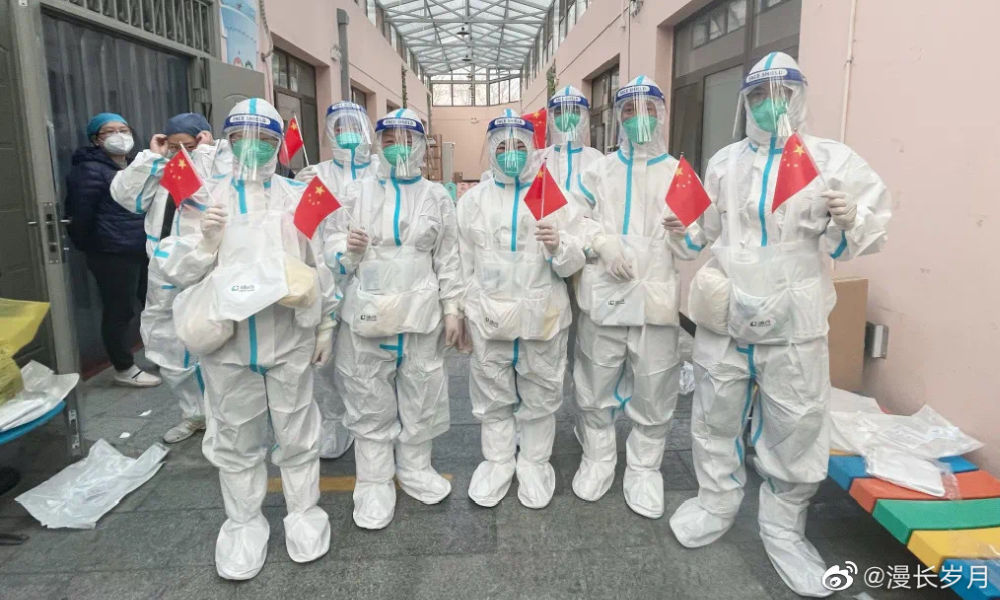
Anti-epidemic workers waving a Chinese flag, posted via @漫长岁月
In the conclusion of his post, Hu calls China’s epidemic prevention a “world-renowned success” that has saved the lives of millions of people over the past three years:
“Facing new circumstances, if we can maintain complete control, and can keep the number of deaths far lower than in the West while also safeguarding our economy and the order of social development, then our epidemic prevention – at every stage and in its entirety – and its achievements will benefit all 1.4 billion Chinese people, and will shine throughout history!“
Hu Xijin’s lengthy post and rose-colored outlook on the future of Covid zero received over 11,000 ‘likes’, but clearly did not impress all of his readers. Some replied: “So you’re basically just explaining the concept of the zero Covid policy again?” “Beijing the most relaxed?” others wondered.
“Stop wide-scale nucleic acid testing!” some said, with others replying: “We can’t continue to blindly follow the zero Covid policy.” “Listen to the voices of the people.”
Another commenter replied: “If we still want to be practical and realistic, we must admit that zero Covid is impossible, and we can’t pay such a high price to go on a mission that will never end. We should revise the general policy and insist on controlling the scale, protecting lives, and preventing hospitalization.”
Some who replied did agree with Hu’s words, writing: “A world-renowned success: it highlights the necessity of unswervingly insisting on ‘dynamic zero’!”
“What must we hold on to? The dynamic Zero Covid policy! Let the West lie flat, because the pandemic will have serious repercussions for them.”
Hu Xijin is not the only Chinese opinion maker who is describing the country’s zero Covid strategy as one that will go down in history as a glorious victory.
In late October, a short video went viral on Twitter showing a Chinese businessman giving a speech in which he claimed China would come out of the pandemic as the winner since the West would be brought to its knees because of the long-term impact of the pandemic. He explicitly mentioned long Covid and its supposed devastating effects on the labor force in the West.
A Chinese business consultant in a Ted-style talk justified zero-Covid policy by saying that in 10 years the West will be brought to its knees b/c long-Covid, which will decimate most of its labor force. pic.twitter.com/kQRTDYE813
— Yanzhong Huang (@YanzhongHuang) October 30, 2022
“I can only say, you’d have to be stupid if you want to give up [lie flat] now. We definitely cannot give up now. What must we hold on to? The dynamic Zero Covid policy! Understand? Let the West not do anything [lie flat], because the pandemic will have serious repercussions for them. So we definitely cannot let it go. So as an ordinary consumer, an ordinary citizen, we cannot forget national humiliation. The people inside the system are much smarter and more advanced than we are. You do not get the basic picture at all. (..) Just do what you’re told. We will win. If the epidemic continues another ten years, we don’t need to fight anymore, the whole world will have fallen.”
The man speaking is Gu Junhui (顾均辉), a finance, business, and strategic positioning expert with a very small following of 336 fans on his Weibo account.
As Gu’s video was widely shared on Twitter, it also started circulating on Chinese social media, where the majority of commenters dismissed Gu Junhui as another self-proclaimed ‘expert’ riding his high horse: “Nobody is listening to this idiot.”
Others ridiculed him for such a stance, writing: “So China can finally win if the West dies out?!” Some even suggested that Gu was a comedian instead of a finance expert.
Despite the online banter, Gu’s vision of China’s dynamic zero Covid future is a recurring one in China’s online media sphere, where other bloggers and authors also measure China’s success through U.S. failures.
Blogger/author Lu Xiaozhou (@卢晓周) wrote on Weibo on November 8 that the U.S. will be drained out because it chose to “lie flat” and live together with Covid-19, a virus that is unpredictable and which scientists around the world still have not figured out.
He says that China, on the other hand, is maintaining a balance between social stability and economic development through its dynamic zero Covid policy.
According to Lu, it’s simple: dynamic zero Covid is “right” whereas coexisting with the virus is “wrong.”
“The dynamic zero Covid policy comes at a high price, and when we give up dynamic zero, we will welcome a big epidemic wave. No matter if it happens this year, next year, in five years’ time, in ten years’ time, or in fifty years’ time, that moment will eventually come.”
During a press conference Saturday, Chinese health officials stated that China would “unswervingly” stick to its zero Covid policy. A hashtag about the topic (#坚持动态清零总方针不动摇#) received 220 million views on Weibo.
In October of this year, Chinese Party newspaper People’s Daily (人民日报) already published an article titled “Dynamic Zero Is Sustainable and Must Be Adhered To” (“动态清零”可持续而且必须坚持”) (read more).
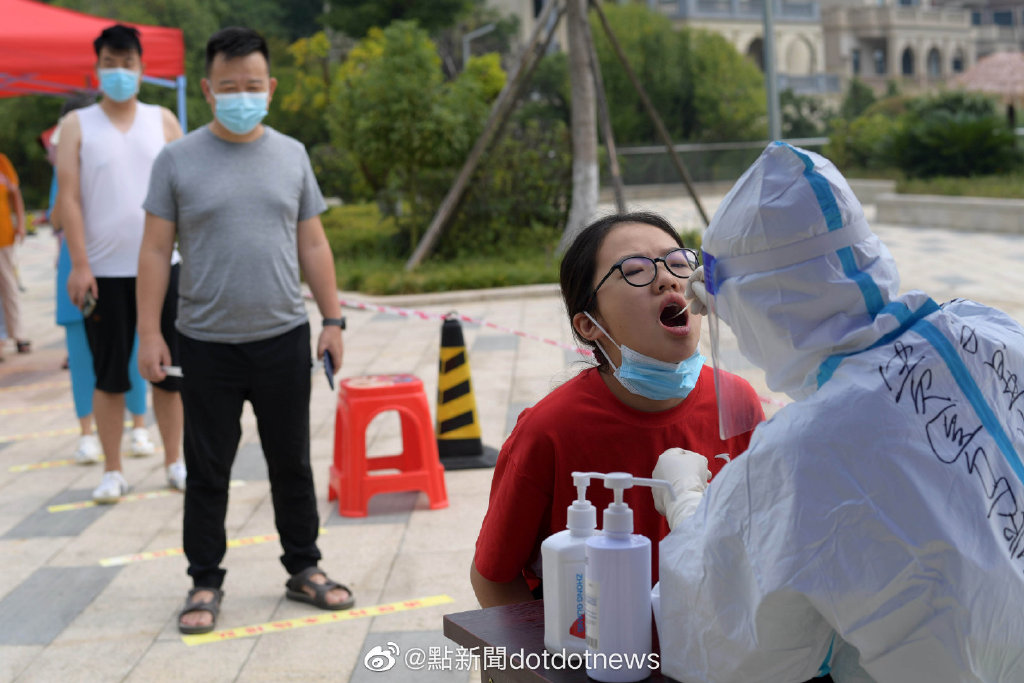
Nucleic acid testing, photo by @dotdotnews.
It is clear that many commenters have a less rose-colored view of the future of ‘zero Covid’ than some of the opinion makers.
One Zhejiang-based doctor named Gong Xiaoming with over 4,6 million followers on Weibo (@龚晓明医生) had a more sober expectation of the future:
“I was prohibited from posting for three months last year after I commented on the epidemic, but I still want to speak my mind. The dynamic zero Covid policy comes at a high price and when we give up dynamic zero Covid, it means we will welcome a big epidemic wave. That moment in time, no matter if it happens this year, next year, in five years’ time, or in ten years’ time, or in fifty years’ time, it will eventually come. So the authorities in every region must ask themselves one question: when then moment comes, are we ready?”
Dr. Gong continues:
“The 1 per 1,000 mortality figure is backed by enough medical resources, and it will probably be higher when there is an instant influx of patients and we don’t have enough medical resources. What is even more important in relation to the mortality rate is: do we have enough intensive care beds? If we still have another year, then let us please use this precious time to strengthen the establishment of the ICUs at local hospitals, to set up respiratory intensive care units, and let use this time to purchase good mechanical ventilators and equipment, strengthen the staff team, especially the medical team, which is not something that can be done within a day or not even within a month. A month ago I paid a visit to a county town with 200,000 inhabitants and the county hospital did not have one single IC bed. This made me deeply concerned. Perhaps I’m overly anxious, and the government might already be taking these steps, but if regional leaders have the vision, please strengthen your local hospital’s intensive care medical departments. Our timeframe is getting shorter. In addition to the construction of ICU, there is also medication, vaccines and other issues that need to be considered.”
Dr. Gong uses graphs with data from Taiwan to support his story, showing an uptick of cases after Taiwan let go of its own ‘zero Covid’ policy in April of 2022.
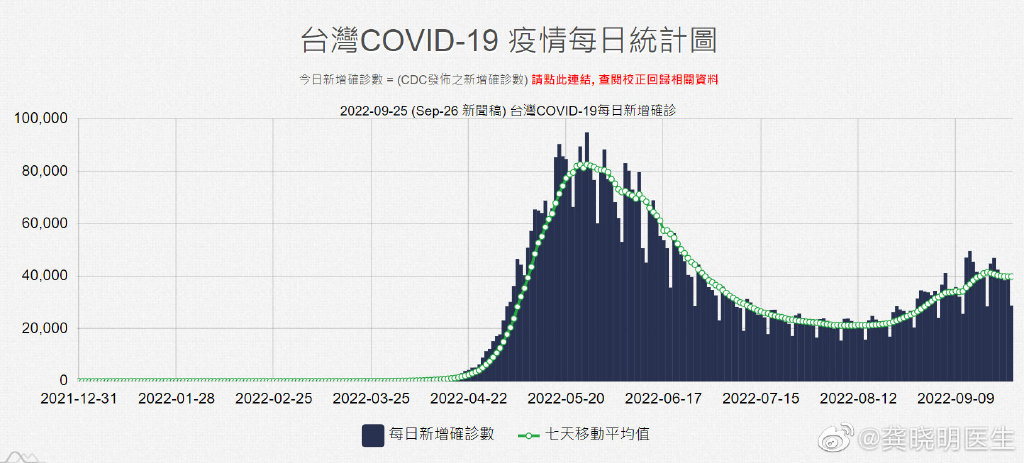
Other voices also express similar visions on the future of dynamic zero in China, seeking for science-based prospects and realistic strategies: “I really hope that the authorities can provide timely and accurate information. The main point is not whether or not we should have the dynamic zero policy, but rather how we can go forward with dynamic zero on a scientific basis,” another popular blogger (@卢麒元) wrote.
Although Dr. Gong’s post was reposted hundreds of times, the comment section was not available at the time of writing (“抱歉,该内容暂时无法查看”).
Political commentator Hu Xijin should be able to appreciate Dr. Gong’s input. In September of this year, Hu argued that more Chinese experts should come forward with suggestions and views based on science in order for the online discourse to focus more on science and rationality rather than letting “discussions be dominated by loud voices on social media.”
By Manya Koetse
Follow @WhatsOnWeibo
-Photo by Xiangkun ZHU on Unsplash
-Photo by Yun XU on Unsplash
– Photo by Guido Hofmann on Unsplash
Get the story behind the hashtag. Subscribe to What’s on Weibo here to receive our newsletter and get access to our latest articles:
Spotted a mistake or want to add something? Please let us know in comments below or email us. First-time commenters, please be patient – we will have to manually approve your comment before it appears.
©2022 Whatsonweibo. All rights reserved. Do not reproduce our content without permission – you can contact us at info@whatsonweibo.com.
Manya is the founder and editor-in-chief of What's on Weibo, offering independent analysis of social trends, online media, and digital culture in China for over a decade. Subscribe to gain access to content, including the Weibo Watch newsletter, which provides deeper insights into the China trends that matter. More about Manya at manyakoetse.com or follow on X.
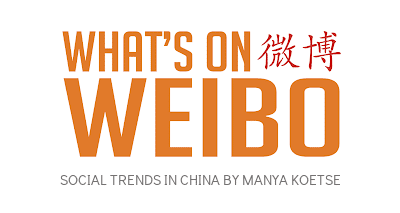
Also Read
China and Covid19
Weibo Watch: Small Earthquakes in Wuhan
How Wuhan is shaking off its past with a new wave of innovation, the hot topics to know, and the Weibo catchphrase of the week: ‘the Three Questions of Patriotism.’
Published
1 month agoon
September 27, 2024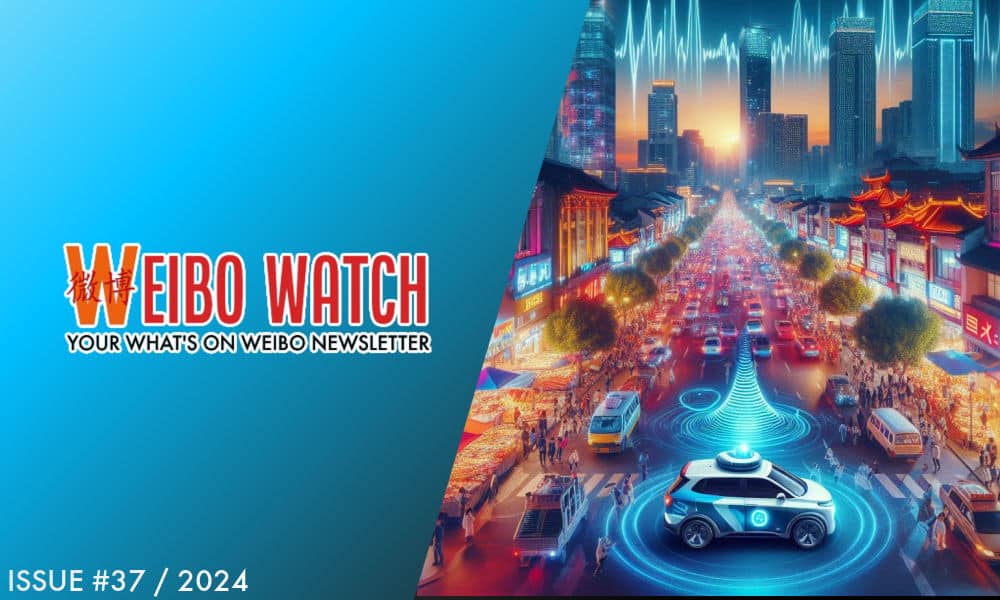
PREMIUM NEWSLETTER | ISSUE #37
Dear Reader,
“Wuhan Earthquake” (#武汉地震#) momentarily became the number one trending topic on Weibo this Friday night, after residents of Jiangxia District reported feeling their homes and buildings shake. “Was there an earthquake, or am I drunk?” some wondered.
I also felt a bit tipsy in Wuhan this month. Neon signs, dancing livestreamers, flying drones, bustling night markets, and holographic lights. On my first night in Wuhan, the lights made me dizzy and I discovered that the city was nothing like I had imagined.
Until now, I couldn’t help but associate Wuhan with the wet market, crowded fever clinics, and China’s first Covid hospitals. As the world watched the pandemic unfold in 2020, Wuhan became instantly famous as an early epicenter of the Covid-19 crisis. It became known as the quarantined city, the city of Dr. Li Wenliang, and the city of the “invincible Wuhan man.” At the time, it seemed like such a monumental event that Wuhan would not recover anytime soon, even after enduring the worst peak of Covid.
Now, over four years later, everything feels different. I felt a rush of energy as I strolled through the lively streets. It was evident that Wuhan is much more than the city that gained global notoriety as the pandemic hotspot. Beyond its vibrant atmosphere, it is making international headlines for its leadership in autonomous driving, having emerged as the world’s largest testing ground for self-driving cars, particularly in unmanned ride-hailing services.
Baidu’s Apollo Go, referred to as Luobo Kuaipao (萝卜快跑) in Chinese, is the driving force behind the robotaxi revolution in Wuhan. Since their arrival earlier this year, they have become a hot topic on Chinese social media, and I was eager to experience it for myself.
(Brief explainer: Luóbo (萝卜) means radish or turnip in Chinese, but when pronounced, it sounds similar to “robo.” Kuàipǎo (快跑) translates to “run fast.” Combined, it creates a playful name that can be interpreted as “Radish Runs Fast” or “Robo Go.” I’ll use ‘Luobo’ here, as it is the most common way to refer to Apollo Go in China and has a cute sound.)
In the areas where the robotaxis operate, people already seem to have become accustomed to the driverless ‘Luobo.’ During a 1.5-hour ride in the unmanned taxi—I took a long journey and then needed to return again—I was surprised to see so many of them on the road. Other drivers, motorcyclists, and passengers didn’t even bat an eye anymore when encountering the new AI taxi.
Currently, there is an active fleet of 400 cars in Wuhan, and Baidu plans to expand this to 1,000 in the fourth quarter of this year. Although these taxis still comprise only a fraction of the city’s entire taxi industry, their impact is noticeable on the roads, where you will inevitably encounter them. I stood at one drop-off point near an urban shopping center for at least forty minutes and witnessed passengers being dropped off continually, with some proceeding their journeys into areas where Luobo doesn’t operate by calling the ride-hailing service Didi from there.
As for the experience itself, it was thrilling to see the steering wheel move with no driver in the front seat. I was surprised at how quickly I adapted to something so unfamiliar. It’s incredibly comfortable to have a car to yourself—no driver, no worries—while you choose your own music (and sing along), set the air conditioning, and relax as the Luobo navigates the traffic.
Even inside the vehicle, Baidu emphasizes the safety of their self-driving cars, providing information about how Apollo Go has accumulated over 100 million kilometers of autonomous driving testing without any major accidents, thanks to a strict safety management system.
If you close your eyes, the experience feels like riding with a regular driver. Luobo speeds up, slows down, and occasionally makes unexpected maneuvers when a car or bike suddenly approaches. It ensures there’s enough space between itself and the car in front. While I can’t say that merging onto the highway or encountering unexpected traffic situations didn’t feel a bit scary, I soon felt at ease and came to rely on the technology.
That said, there are still bumps in the road. Luobo has often been ridiculed on Chinese social media for getting stuck at a green light, stopping for a garbage bag, or struggling to make a U-turn. While riding and observing the robotaxis in Wuhan, I noticed plenty of honking and road rage as Luobo chooses safety first, often appearing sluggish, earning them the nickname ‘Sháo Luóbo’ (勺萝卜/苕萝卜, “silly radish”).
While Luobo might still have its silly moments, it is a serious part of the future. Already, it is popular among commuters for its low cost, privacy, and convenience.
After spending an entire morning riding and watching the Luobos, I excitedly felt like I had experienced a glimpse of the future. Right now, Luobo Kuaipao operates in various cities across China, including Beijing, but it’s still in the testing phase there—none of my friends from Beijing have ever seen or taken one yet. However, this will likely change soon, heavily relying on policy support.
That night, I spoke to a young local in a busy commercial area near my hotel. Like many residents, he was curious about where I came from and what I was doing in Wuhan. (During the four days I spent there, I noticed very few foreign tourists.) We briefly discussed the pandemic; he reflected on the difficulties it brought but treated it as something from the past—just another bump in the road in the city’s long history.
Instead of dwelling on the pandemic, our conversation focused on the future: Wuhan’s robotaxis, his confidence in China’s technology, and the rising importance of his country on the geopolitical stage. He was just one of several young people I spoke to, from shopkeepers to students, who seemed very focused on China’s growth and development and how its technological advancements reflect its position in a world where the U.S. is no longer leading.
When it comes to China’s driverless innovations, they are shaking the foundations of transportation like an earthquake. Besides Apollo Go, companies like Pony.ai (小马智行), WeRide (文远知行), SAIC Motor (上汽集团), AutoX (安途), FAW (一汽), Changan Automobile (长安汽车), BYD (比亚迪), Yutong (宇通), and many other industry players are also working to realize driverless passenger cars, shuttle services, freight trucks, delivery vehicles, public transport buses, and much more.
What we’re witnessing in Wuhan is merely a glimpse into a future under construction, actively promoted by Chinese state media. Over the past week alone, CCTV featured Luobo Kuaipao in three segments as a key example of China’s new technological advancements and the national strategy to build a strong tech-driven economy.
As I left Wuhan in a traditional taxi, I suddenly felt like a time traveler. Wuhan was the birthplace of the 1911 revolution and will also appear in foreign history books as the initial epicenter of the Covid-19 pandemic. Now, it is at the center of an international robotaxi revolution, and it won’t be the same the next time I return.
While my friendly elderly driver—I estimated him to be in his late 50s—honked at other cars, I realized he had witnessed many other revolutions, including the Cultural Revolution as a young boy, the economic reforms, and the major social changes of the 1980s, as well as the digital revolution of the 2000s. With the growth of Wuhan’s robotaxi fleet, his job might be affected, adding another tremor to his city and his life—though he may already be retired by then.
As he helped me with my luggage and wished me a safe trip home at the Wuhan Hankou Station, I couldn’t help but feel nostalgic about how everything always changes and gets shaken up as we move forward into a future driven by technology.
As for Friday’s earthquake in Wuhan—it turns out it was a 1.6. Despite the online interest in the topic, it means virtually nothing in a city where things of much greater magnitude are happening.
If you’d like to know more about my experiences and the slight setback I encountered while searching for Wuhan’s robotaxis, check out the short videos I made here:
Part 1 (also on Instagram)
Part 2 (also on Instagram).
Best,
Manya Koetse
(@manyapan)
What To Know
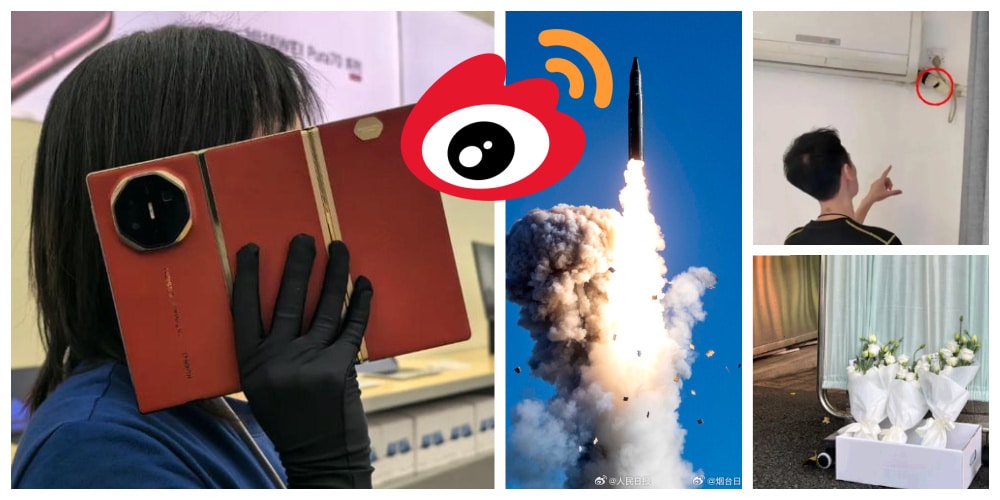
🚀 China’s First Intercontinental Ballistic Missile Test-Launch Since 1980
On the morning of September 25, China announced a successful test launch of an intercontinental ballistic missile (ICBM) carrying a ‘dummy warhead’ into the Pacific Ocean. This marked the first ICBM launch in decades, described by official media as part of routine annual training.
The People’s Daily Weibo account of the Communist Party shared a video of the People’s Liberation Army (PLA) announcing the successful test launch, accompanied by suspenseful and patriotic music, specifically the “March of the Steel Torrent” (钢铁洪流进行曲) (see video). This launch quickly became a trending topic (#我军向太平洋发射洲际弹道导弹#). While Chinese state media claimed that Beijing informed relevant countries in advance, Japan stated that it did not receive any prior notice, further heightening tensions between China and Japan.
🇯🇵 Aftermath of Japanese Schoolboy Stabbing
The incident in which a Chinese man fatally stabbed a ten-year-old Japanese schoolboy near the Shenzhen Japanese School on September 18 has become a widely discussed topic this month. The attacker, a 44-year-old Chinese national, was immediately arrested. However, discussions about the stabbing are ongoing, as it has sparked a wave of anger in Japan, where critics argue that anti-Japanese sentiments in China are fueled by official media and national education.
Meanwhile, China and Japan have effectively resolved their diplomatic dispute regarding the Fukushima water discharge, with some suggesting a connection between the two events. China’s Foreign Ministry spokesperson Mao Ning (毛宁) stated on September 20 that the issues are not related (#中日共识与日本男童遇袭无关#). Beyond the geopolitical implications, the international media coverage of the stabbing incident has also provoked anger on Chinese social media, where many netizens reject the supposed negative portrayal of China. The topic is quite sensitive and continues to face significant censorship online.
📱 Huawei Trifold Phone
The launch of Huawei’s ‘trifold’ phone earlier this month generated significant excitement in China, with many believing that Huawei—and, by extension, China—is now at the forefront of innovation in the folding screen smartphone race. The Mate XT is the first triple-folding screen phone, leading some top commenters to proclaim, “Huawei’s innovation capability is truly the best in the world. While other manufacturers are still researching foldable phones, Huawei has already released the trifold.”
During my travels in China over the past few weeks, I visited several Huawei stores, but unfortunately, the trifold was never on display; it’s available only by reservation and has allegedly garnered millions of pre-orders, despite its hefty price tag of CNY 19,999 (USD 2,850). There’s also been some lighthearted banter surrounding the phone, including a viral post that humorously depicts what it looks like when you make a phone call with the screen unfolded (it looks ridiculous), and a user who taped two phones together to create a sixfold.
👴 Retirement Age Discussions
News came out last week that China will raise its retirement age for the first time since the 1950s. China’s current retirement ages are among the world’s lowest. Facing an aging society and declining birth rates, the ages will now be increased in a step-by-step implementation process: 50 to 55 for women in blue-collar jobs, 55 to 58 for females in white-collar jobs, and 60 to 63 for male workers.
This change, set to take effect on January 1, 2025, has already sparked considerable discussion this year after experts proposed the adjustment. A related hashtag has garnered over 870 million views on Weibo (#延迟法定退休年龄改革#), where many users expressed their dissatisfaction with the change. “Great, I’ll get to retire in September of 2051 now,” one young worker wrote. “We start studying earlier and retire later; how can we keep up with this?”
📷 Hidden Hotel Cameras
After a Chinese blogger known as “Shadows Don’t Lie” (@影子不会说谎) recently discovered and exposed hidden cameras in the rooms of two guesthouses in Shijiazhuang, he faced significant intimidation and threats from the owners and employees, who accused him of staging the situation for attention.
However, the situation turned out to be real, and local police arrested multiple suspects responsible for installing these cameras inside these hotel rooms, which are often rented by young couples for romantic short stays. The suspects reportedly did not know the guesthouse owners and had secretly set up the cameras to profit illegally. This incident, which continues to generate discussion online, has heightened public concern over privacy protection and the integrity of the guesthouse industry, particularly as this is not the first time such issues have been revealed.
Weibo Word of the Week

The Three Questions of Patriotism
Our Weibo word of the week is 爱国三问 (àiguó sān wèn), which translates to “The Three Questions of Patriotism.” This phrase has recently gained attention on Chinese social media as it was highlighted and propagated by official media channels.
The three questions are:
1. Are you Chinese? (你是中国人吗)
2. Do you love China? (你爱中国吗)
3. Do you wish China well? (你愿意中国好吗)
These questions were originally posed in 1935 by Zhang Boling (张伯苓), the first president of the renowned Nankai University (南开大学) in Tianjin.
Today, they are being revived on Chinese social media through various videos released by official channels.
One notable video is part of a new online series produced by state media titled “Great Educators” (大教育家), which features reenactments of speeches by prominent Chinese educators. In this series, Zhang Boling’s speech, portrayed by actor Wang Ban (王斑), emphasizes the importance of unity in tumultuous times.
Rather than dwelling on differences, Zhang urged people to recognize their shared identity: they are all Chinese, they love China, and they all aspire for the country’s prosperity.
Another video features Nankai University’s current president, Chen Yulu (陈雨露), addressing students during a large event on September 21st. In his speech, Chen reiterates the three famous questions, prompting the hundreds of students in attendance to respond enthusiastically: “We are [Chinese]!” “We love [China]!” “We wish [China well]! We want China to be strong and prosperous!” This response is followed by enthusiastic applause.
Additionally, another video from the same day features a meeting between Chen Yulu and an AI version of Zhang Boling, digitally resurrected to address the students and celebrate the start of the new school year. During this ‘virtual dialogue,’ Chen informs Zhang that his ‘Three Questions of Patriotism’ have become a cherished tradition at Nankai’s annual opening ceremony.
According to Chinese state media, the students’ responses to these three questions illustrate how contemporary Chinese youth are aligning their personal aspirations with national progress. This alignment is seen as a revival of the patriotic spirit that Zhang Boling instilled in students during wartime. However, the current ‘revival’ of this sentiment appears to be largely reflected across various official channels, with limited engagement from ordinary netizens.
This is an on-site version of the Weibo Watch newsletter by What’s on Weibo. Missed last week’s newsletter? Find it here. If you are already subscribed to What’s on Weibo but are not yet receiving this newsletter in your inbox, please contact us directly to let us know.
China and Covid19
Sick Kids, Worried Parents, Overcrowded Hospitals: China’s Peak Flu Season on the Way
“Besides Mycoplasma infections, cases include influenza, Covid-19, Norovirus, and Adenovirus. Heading straight to the hospital could mean entering a cesspool of viruses.”
Published
12 months agoon
November 22, 2023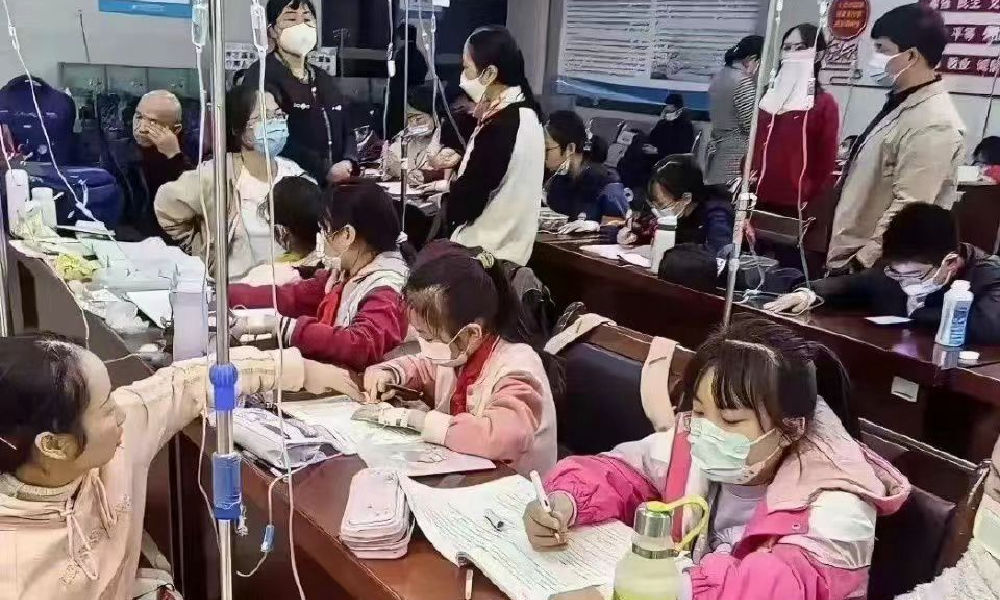
In the early morning of November 21, parents are already queuing up at Xi’an Children’s Hospital with their sons and daughters. It’s not even the line for a doctor’s appointment, but rather for the removal of IV needles.
The scene was captured in a recent video, only one among many videos and images that have been making their rounds on Chinese social media these days (#凌晨的儿童医院拔针也要排队#).
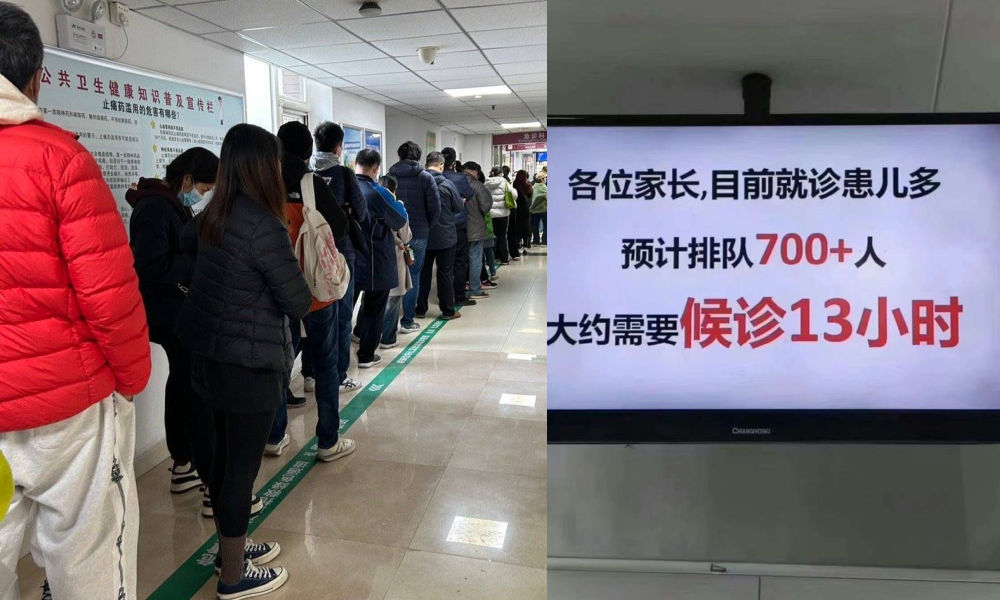
One photo shows a bulletin board at a local hospital warning parents that over 700 patients are waiting in line, estimating a waiting time of more than 13 hours to see a doctor.
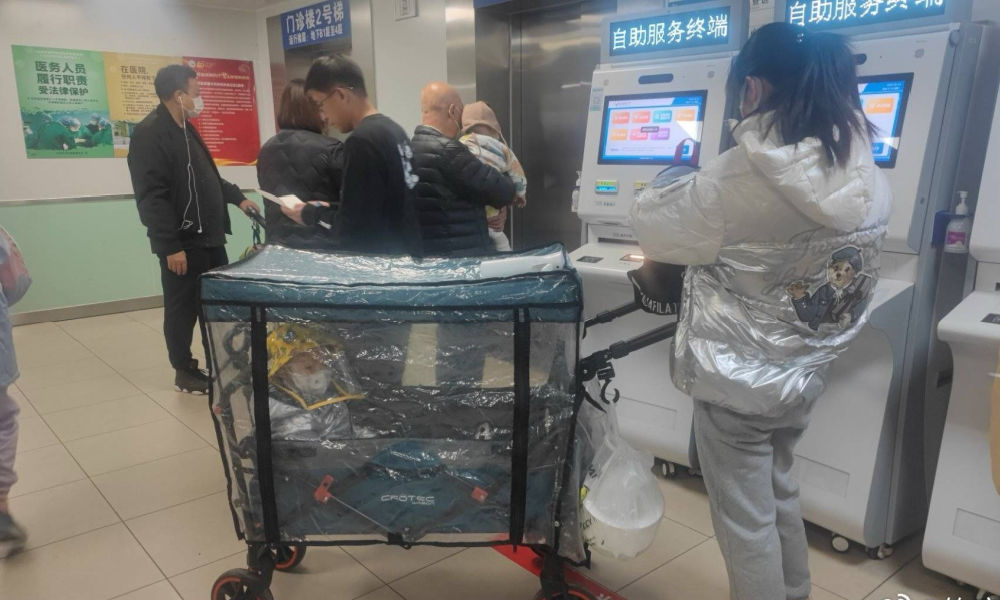
Another image shows children doing their homework while hooked up on an IV.

Recent discussions on Chinese social media platforms have highlighted a notable surge in flu cases. The ongoing flu season is particularly impacting children, with multiple viruses concurrently circulating and contributing to a high incidence of respiratory infections.
Among the prevalent respiratory infections affecting children are Mycoplasma pneumoniae infections, influenza, and Adenovirus infection.
The spike in flu cases has resulted in overcrowded children’s hospitals in Beijing and other Chinese cities. Parents sometimes have to wait in line for hours to get an appointment or pick up medication.
According to one reporter at Haibao News (海报新闻), there were so many patients at the Children’s Hospital of Capital Institute of Pediatrics (首都儿科研究所) on November 21st that the outpatient desk stopped accepting new patients by the afternoon. Meanwhile, 628 people were waiting in line to see a doctor at the emergency department.
Reflecting on the past few years, the current flu season marks China’s first ‘normal’ flu peak season since the outbreak of Covid-19 in late 2019 / early 2020 and the end of its stringent zero-Covid policies in December 2022. Compared to many other countries, wearing masks was also commonplace for much longer following the relaxation of Covid policies.
Hu Xijin, the well-known political commentator, noted on Weibo that this year’s flu season seems to be far worse than that of the years before. He also shared that his own granddaughter was suffering from a 40 degrees fever.
“We’re all running a fever in our home. But I didn’t dare to go to the hospital today, although I want my child to go to the hospital tomorrow. I heard waiting times are up to five hours now,” one Weibo user wrote.
“Half of the kids in my child’s class are sick now. The hospital is overflowing with people,” another person commented.
One mother described how her 7-year-old child had been running a fever for eight days already. Seeking medical attention on the first day, the initial diagnosis was a cold. As the fever persisted, daily visits to the hospital ensued, involving multiple hours for IV fluid administration.
While this account stems from a single Weibo post within a fever-advice community, it highlights a broader trend: many parents swiftly resort to hospital visits at the first signs of flu or fever. Several factors contribute to this, including a lack of General Practitioners in China, making hospitals the primary choice for medical consultations also in non-urgent cases.
There is also a strong belief in the efficacy of IV infusion therapy, whether fluid-based or containing medication, as the quickest path to recovery. Multiple factors contribute to the widespread and sometimes irrational use of IV infusions in China. Some clinics are profit-driven and see IV infusions as a way to make more money. Widespread expectations among Chinese patients that IV infusions will make them feel better also play a role, along with some physicians’ lacking knowledge of IV therapy or their uncertainty to distinguish bacterial from viral infections (read more here)
To prevent an overwhelming influx of patients to hospitals, Chinese state media, citing specialists, advise parents to seek medical attention at the hospital only for sick infants under three months old displaying clear signs of fever (with or without cough). For older children, it is recommended to consult a doctor if a high fever persists for 3 to 5 days or if there is a deterioration in respiratory symptoms. Children dealing with fever and (mild) respiratory symptoms can otherwise recover at home.
One Weibo blogger (@奶霸知道) warned parents that taking their child straight to the hospital on the first day of them getting sick could actually be a bad idea. They write:
“(..) pediatric departments are already packed with patients, and it’s not just Mycoplasma infections anymore. Cases include influenza, Covid-19, Norovirus, and Adenovirus. And then, of course, those with bad luck are cross-infected with multiple viruses at the same time, leading to endless cycles. Therefore, if your child experiences mild coughing or a slight fever, consider observing at home first. Heading straight to the hospital could mean entering a cesspool of viruses.”
The hashtag for “fever” saw over 350 million clicks on Weibo within one day on November 22.
Meanwhile, there are also other ongoing discussions on Weibo surrounding the current flu season. One topic revolves around whether children should continue doing their homework while receiving IV fluids in the hospital. Some hospitals have designated special desks and study areas for children.
Although some commenters commend the hospitals for being so considerate, others also remind the parents not to pressure their kids too much and to let them rest when they are not feeling well.
Opinions vary: although some on Chinese social media say it's very thoughtful for hospitals to set up areas where kids can study and read, others blame parents for pressuring their kids to do homework at the hospital instead of resting when not feeling well. pic.twitter.com/gnQD9tFW2c
— Manya Koetse (@manyapan) November 22, 2023
By Manya Koetse, with contributions from Miranda Barnes
Get the story behind the hashtag. Subscribe to What’s on Weibo here to receive our newsletter and get access to our latest articles:
Spotted a mistake or want to add something? Please let us know in comments below or email us. First-time commenters, please be patient – we will have to manually approve your comment before it appears.
©2023 Whatsonweibo. All rights reserved. Do not reproduce our content without permission – you can contact us at info@whatsonweibo.com.
Subscribe

Hu Xijin’s Comeback to Weibo

Weibo Watch: “Comrade Trump Returns to the Palace”

The Price of Writing Smut: Inside China’s Crackdown on Erotic Fiction

Controversial Wanghong Livestreamers Are Becoming a Weibo Staple in China

The Viral Bao’an: How a Xiaoxitian Security Guard Became Famous Over a Pay Raise

About Wang Chuqin’s Broken Paddle at Paris 2024

“Land Rover Woman” Sparks Outrage: Qingdao Road Rage Incident Goes Viral in China

China at Paris 2024 Olympics Trend File: Medals and Moments on Chinese Social Media

Weibo Watch: The Land Rover Woman Controversy Explained

Stolen Bodies, Censored Headlines: Shanxi Aorui’s Human Bone Scandal

Fired After Pregnancy Announcement: Court Case Involving Pregnant Employee Sparks Online Debate

Weibo Watch: Going the Wrong Way

Team China’s 10 Most Meme-Worthy Moments at the 2024 Paris Olympics

Weibo Watch: Shaping Olympic Narratives

“No Kimonos Allowed” – Ongoing Debate on Japanese Attire in China
Get in touch
Would you like to become a contributor, or do you have any tips or suggestions? Get in touch here!
Popular Reads
-
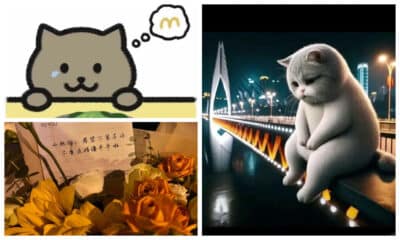
 China Insight6 months ago
China Insight6 months agoThe Tragic Story of “Fat Cat”: How a Chinese Gamer’s Suicide Went Viral
-

 China Music7 months ago
China Music7 months agoThe Chinese Viral TikTok Song Explained (No, It’s Not About Samsung)
-
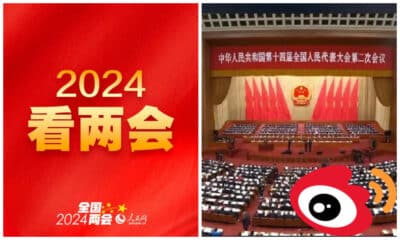
 China Insight8 months ago
China Insight8 months agoThe ‘Two Sessions’ Suggestions: Six Proposals Raising Online Discussions
-

 China Insight12 months ago
China Insight12 months agoThe Story of Li Jun & Liang Liang: How the Challenges of an Ordinary Chinese Couple Captivated China’s Internet
